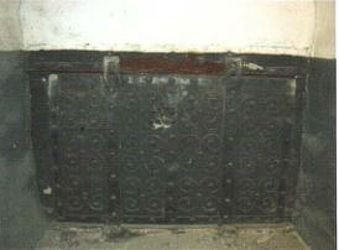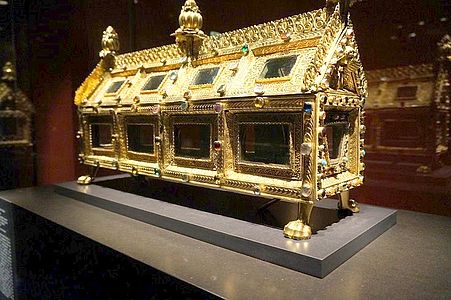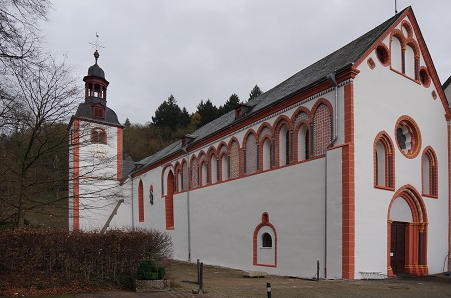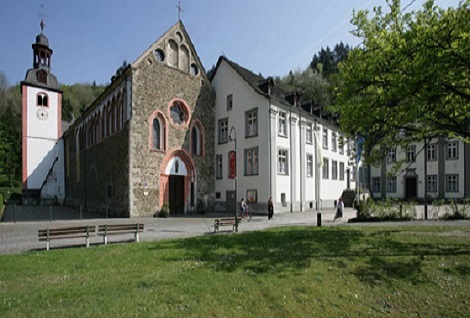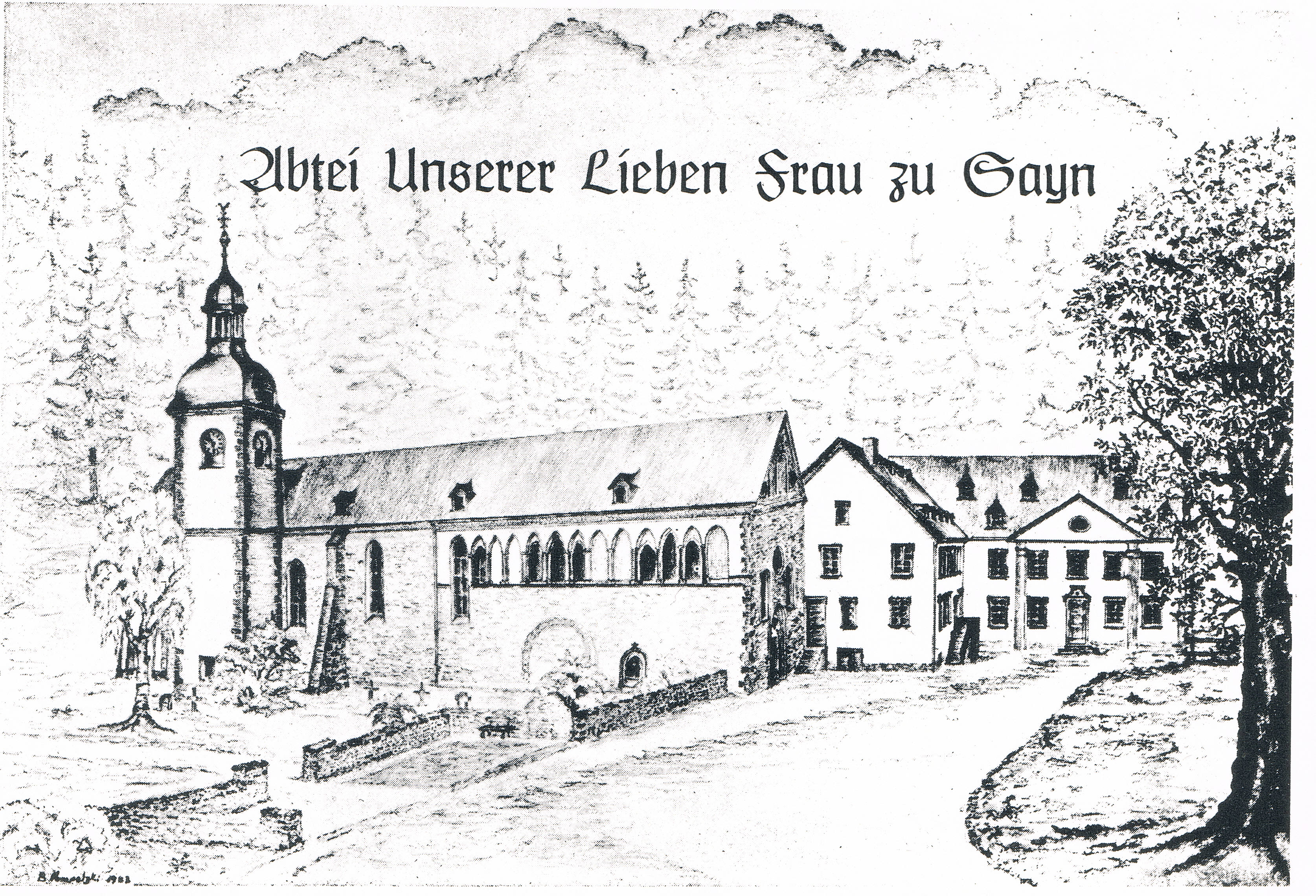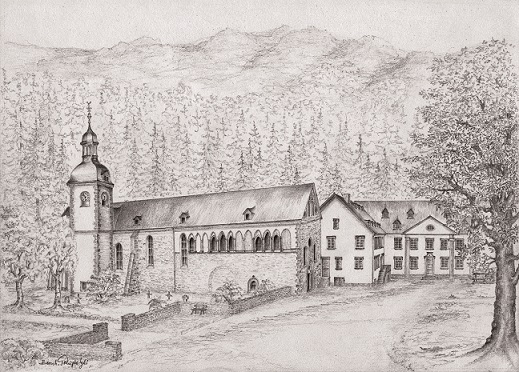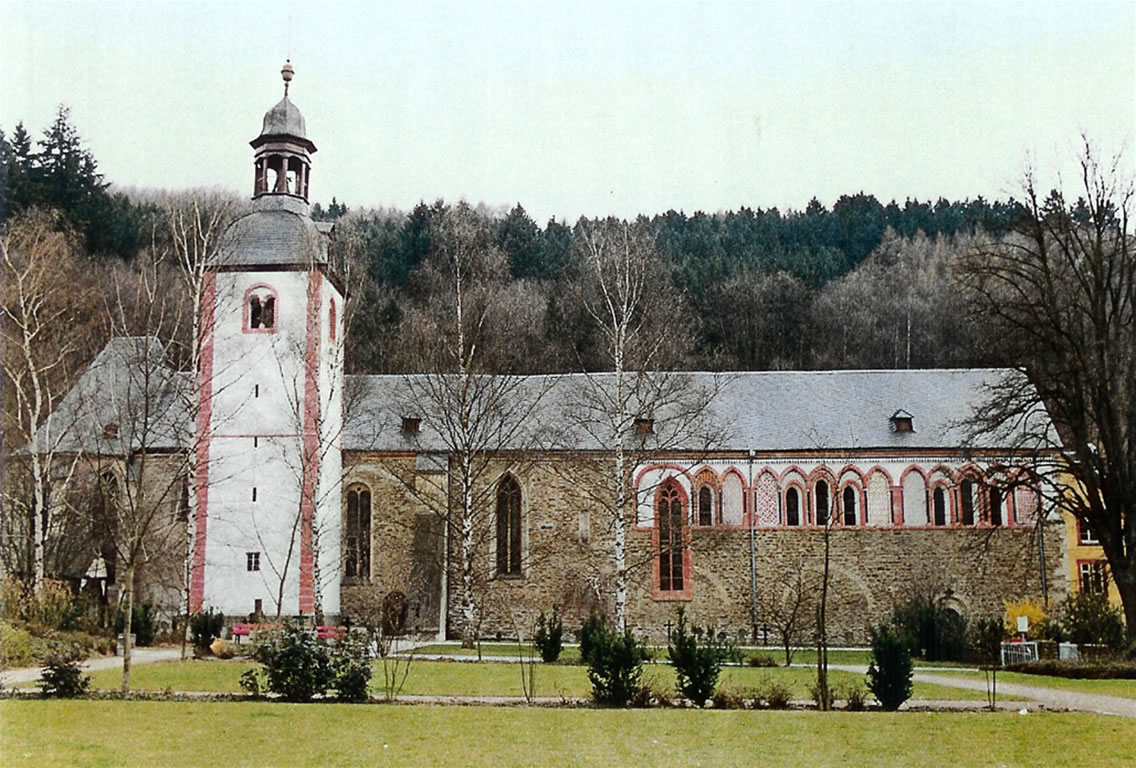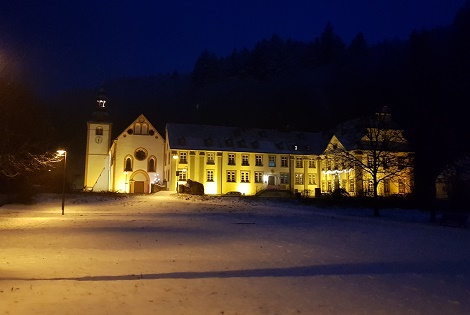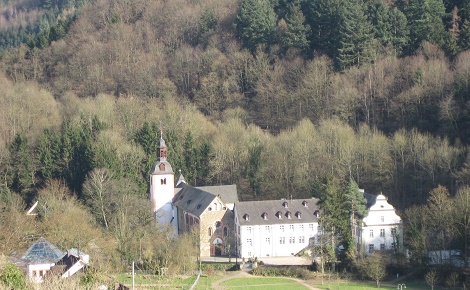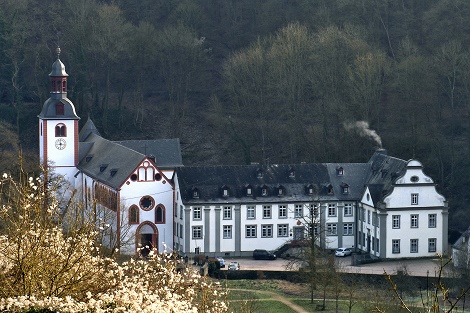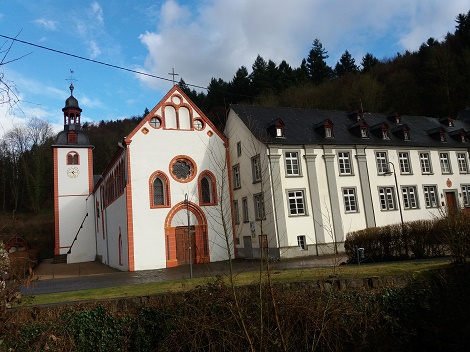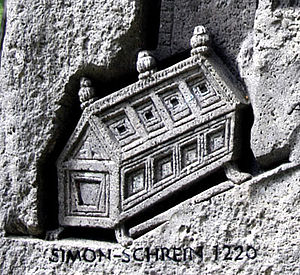The Simon Shrine in the Sayn Abbey
The high middle ages was a time of devout relic adoration. For this reason it was of great significance that the Sayn abbey was presented with a relic in 1204 shortly after being founded. This being venerated as the arm of the apostle Simon. The benefactor was Bruno of Sayn, provost in Bonn, from 1205 Archbishop of Cologne, the brother of Count Heinrich 2nd the founder of the Abbey. Around 1220 the Premonstratensian monks of Sayn had a suitable receptacle made for the relic, a shrine in the shape of a house (as depicted in photo 1), the windows of which were set with quartz. These are surrounded by decoration, cast and leaf work and semi-precious jewels. However it is not as valuable as it would seem. The value of the material is not as high as could be assumed from looking at how precious it looks. The shrine is made of wooden sticks which are covered with copper-iron. On the gables there are angel figures made of copper with a coating of gold.
The relic soon became a goal for pilgrims. In particular when the church festival took place on the fourth Sunday after Easter and the following Sunday numerous pilgrims came to Sayn. Older inhabitants of our town will remember that the shrine used to be opened when it was the fairground festival and was placed on the altar. On old weather proverb was that it would not get warm until Simons arm had been seen.
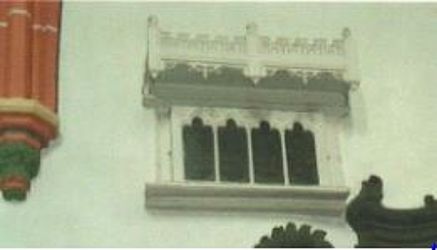
Today the shrine is protected by armored glass and displayed at the high altar. In earlier times it was kept behind a window on the right-hand side of the nave that leads to the old vestry on the first floor (see photo 2). The wall opening corresponds exactly with the size of the shrine. Only recently it was discovered that the window can be closed from the inside by way of a flap (see photo 3). The iron covering that may have been produced in the 18. Century was not visible because the flap was flat and looked like a floor covering.
by Dietrich Schabow
